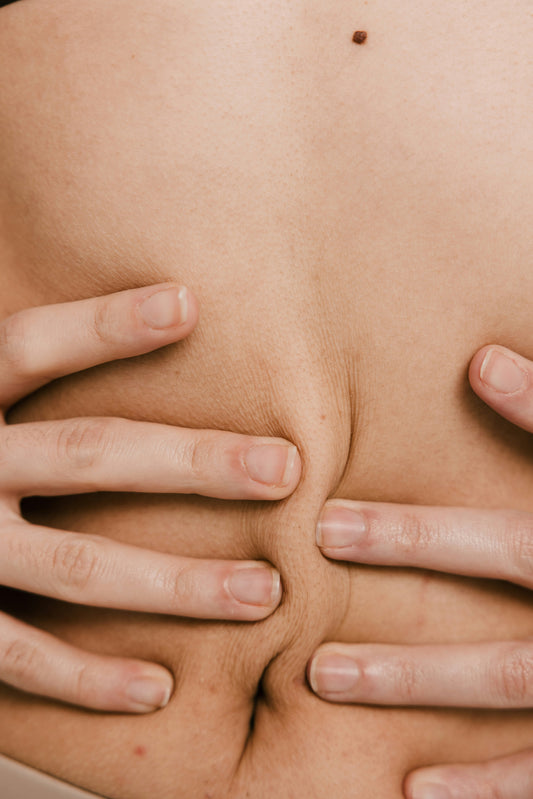

Cycle Syncing Workout Plan
Optimize Fitness Through Hormonal Fluctuations
Do you ever wonder why the same easy workout from last week feels infinitely harder this week?
Why sometimes weight lifting makes you feel powerful, but sometimes you can’t imagine doing more than stretching?
The menstrual cycle often brings about significant mood swings and energy fluctuations, making it challenging to maintain a consistent high-intensity workout routine. Instead of resisting these natural changes, it can be beneficial to align exercise routines with the body's hormonal fluctuations. Understanding how to tailor workouts to the different phases of the menstrual cycle can improve overall well-being and enhance fitness results.
Here's a guide to optimizing exercise during each phase of the cycle.
Menstrual Phase (Day 1-5): Light Cardio, Flexibility, Gentle Yoga
During the menstrual phase, progesterone levels are at their lowest, often leading to fatigue and moodiness. Engaging in light activities such as gentle walks, restorative yoga, and foam rolling can be particularly beneficial. A leisurely stroll can help soothe cramps, while foam rolling can alleviate back pain. This phase is ideal for prioritizing active rest to support the body's need for recovery.
Follicular Phase (Day 6-12): Running, Strength Training, HIIT
As estrogen and testosterone levels begin to rise, energy levels increase. This phase is perfect for more intense workouts such as HIIT, strength training, or dance workouts. These activities can maximize the body's enhanced capacity for performance and muscle building. However, it’s crucial to incorporate proper warm-ups and cool-downs to prevent injury.
Ovulatory Phase (Day 12-15): Reformer, Strength Training, Dancing
The ovulatory phase brings peak energy, motivation, and strength due to elevated estrogen and testosterone. This is an optimal time for heavy lifting, rock climbing, or engaging in group fitness activities. While high-intensity workouts are beneficial, listening to the body's signals is essential. Low-intensity steady-state cardio and activities like Pilates can also be effective during this high-energy period.
Luteal Phase (Day 16-28): Active Meditations, Reformer, Naps
With rising progesterone levels, feelings of tiredness, irritability, and PMS symptoms are common. Gradually decreasing exercise intensity is recommended during this phase. Focusing on yoga, Pilates, and other low-impact exercises can help manage the body's increased sensitivity to stress. This period is also suitable for incorporating active meditations and ensuring ample rest.
Why This Strategy Works
Aligning exercise with the menstrual cycle leverages the natural hormonal fluctuations to optimize physical performance and recovery.
High-intensity workouts during phases of elevated estrogen and testosterone can maximize energy and strength, while light activities during low-hormone phases support the body's need for rest and recovery. This approach not only enhances physical fitness but also helps manage menstrual symptoms, improving overall mood and well-being.
Remember, it's essential to adapt workout routines to individual needs and listen to the body's signals. The menstrual cycle can provide valuable insights into optimizing fitness and well-being, making it a powerful tool for personal health management.
Get notified when a new article is being published
Subscribe to our newsletter
Related Articles
Visa alla-

Meet the Probiotics in Mela Hormone Support
It's no surprise that many women trying Mela Hormone Support feel instant relief in their digestion. Packed with 20 billion bacteria from 6 different strains, these beneficial bacteria tackle not...
Meet the Probiotics in Mela Hormone Support
It's no surprise that many women trying Mela Hormone Support feel instant relief in their digestion. Packed with 20 billion bacteria from 6 different strains, these beneficial bacteria tackle not...
-

How Hormone Support can Help with PCOS
Polycystic ovary syndrome (PCOS) affects millions of women worldwide, manifesting in symptoms like irregular periods, acne, weight gain, and hormonal imbalances. Managing these symptoms often requires a holistic approach, including...
How Hormone Support can Help with PCOS
Polycystic ovary syndrome (PCOS) affects millions of women worldwide, manifesting in symptoms like irregular periods, acne, weight gain, and hormonal imbalances. Managing these symptoms often requires a holistic approach, including...



